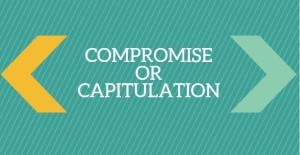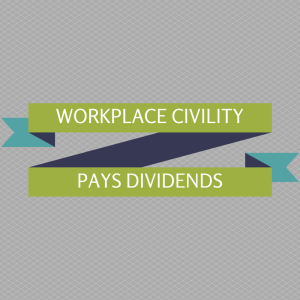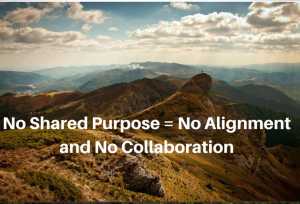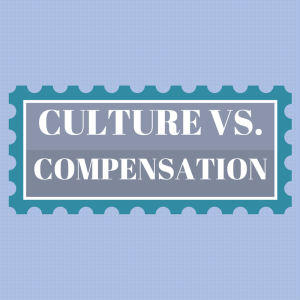Mary E. Marshall's Blog, page 35
July 14, 2015
Holacracy – What’s the Purpose?
 Recently, I was reading about Zappo’s transformation to a Holacracy model, which essentially means it has become a flat organizational structure without the traditional hierarchy of “boss-employee.” The employees form workgroups or circles based on tasks or processes that need accomplishing. As you may know Zappos has a history of doing things differently and getting great results. They have a culture of innovation, empowerment and customer service that led to fast growth and their acquisition by Amazon.
Recently, I was reading about Zappo’s transformation to a Holacracy model, which essentially means it has become a flat organizational structure without the traditional hierarchy of “boss-employee.” The employees form workgroups or circles based on tasks or processes that need accomplishing. As you may know Zappos has a history of doing things differently and getting great results. They have a culture of innovation, empowerment and customer service that led to fast growth and their acquisition by Amazon.
So, I was curious, why would they adopt this model now? What problem were they trying to solve? What is the purpose? I couldn’t find one other than CEO Tony Hsieh’s need for “new, change, different, exciting,” which have been themes in the past that have worked for the company. Holacracy is a belief system that says we are all equal and capable of doing anything and we don’t need to be micromanaged to do it. My question is, was there micromanagement going on? Did employees feel disempowered? Were things such as deadlines and processes not working? From all news reports, the answer is “no.”
Holacracy as Culture
Holacracy becomes the culture of an organization, and a belief system all must abide by. The training for the new culture process is 4 weeks for every employee, so cost savings were obviously not the goal. And it turns out, Zappos lost 200 employees who said “not for me” and left with a nice severance after this new culture was put into place. I wonder if they believe that productivity will go up and by when? What is the ROI on the process change? As with any organization, that has to be a factor. What is the expectation after having the company completely shifted over to this model?
I don’t know if Holacracy is good or bad. I know it’s different, however, and different without a stated purpose can be referred to as “Bright Shiny Star Syndrome” that all entrepreneurs are tempted by at some point in their evolution. Zappo’s culture likes change, they like bright new shiny objects. However, change for change’s sake usually leads to more chaos and less productivity. A lot has been said about the X, Y, and Z generations of workers preferring the flat organizational structure vs. the typical hierarchy. I think it’s more a matter of finding a company whose purpose and values they believe in, where they are recognized for their work and can make a difference. Ultimately, some employees will be drawn towards a holacratic structure, just as many were drawn towards communes in the 60s and 7’s. There is something very socialistic about it.
Until someone can show what the stated purpose, outcome, or goal is for moving to this structure and the results against those purposes, I will be wary of its “fad” nature. Unlike Deming’s revolutionary management practices and Lean Management results, Holacracy has yet to show results against purpose.
The post Holacracy – What’s the Purpose? appeared first on Mary Marshall // CEO Coach.
July 7, 2015
Organizations of the Future
 Jacob Morgan’s recently published book “The Future of Work” is a fascinating observation of what’s happening in the workplace. He’s published several posts and articles as well which can be found at www.thefutureorganization.com all relating to the topic.
Jacob Morgan’s recently published book “The Future of Work” is a fascinating observation of what’s happening in the workplace. He’s published several posts and articles as well which can be found at www.thefutureorganization.com all relating to the topic.
He provides 14 principles of future organizations:
Globally distributed with smaller teams
Connected workforce
Intrapreneurial
Operates like a small company
Focuses on “want” instead of “need”
Adapts to change faster
Innovation anywhere
Runs in the cloud
More women in senior management
Flatter structure
Tells stories
Democratizes learning
Shifts from profits to prosperity
Adapts to future employee and manager
What I found really interesting about all of these principles, (which I wholeheartedly agree with), is that they are tailor-made for entrepreneurs. All the things entrepreneurs do on a daily basis are now seen as what will work in the future of large organizations as well. So why the sudden realization?
Because the workforce is demanding to be treated differently. They want to matter and they have choices. So we adapt, and what better place to look for how to do that than entrepreneurs? Entrepreneurial companies have smaller teams and it’s less bureaucratic so it’s easier to get things done quickly. In this scenario the employee has his or her workmates, but also gets to operate independently, creating more accountability, (not less, as some would argue).
Technology has allowed us to have a connected workforce with the flexibility to work from anywhere and not have to “report” to one spot, which also increases the likelihood of an intrapreneurial mindset working more like a small company. Flexible, fast and adapting rapidly to change, innovation will be found everywhere because it’s encouraged and the environment is set-up to foster it.
Also interesting is number 11, “tell stories.” As Morgan says, companies have long been focused on telling their stories to the outside to “sell” products, shares or services. Telling the stories inside is what fosters loyalty, and teams working well together and creating company lore. People don’t want to work somewhere that doesn’t have an interesting story. They have too many choices. As I talk about in my book regarding “Intentional Culture,” story telling comes from the foundational values of a company and the stories that show how they were lived. When there is alignment in what is said and done, people are motivated. They want to do everything possible to shift from “profits to prosperity.” They are not anti-profit, they want all those who contribute to prosper. It’s a good story and it works.
As you look at your organization and how you’ll be ready for the future, go back to your entrepreneurial roots and borrow from your own playbook. You’ll just have a few more technological advantages this time around.
The post Organizations of the Future appeared first on Mary Marshall // CEO Coach.
July 1, 2015
Compromise or Capitulation
 Entrepreneurs are forced on a daily basis to compromise in order get what they need, particularly in the start-up phases because there is a lack of resources that can include money, time, products or people. It is primarily the lack of access to these resources that forces them to make deals or compromise what they originally wanted in order to get what they need. We label this scrappy, or settling, and in many cases it leads to a negative outcome or capitulation.
Entrepreneurs are forced on a daily basis to compromise in order get what they need, particularly in the start-up phases because there is a lack of resources that can include money, time, products or people. It is primarily the lack of access to these resources that forces them to make deals or compromise what they originally wanted in order to get what they need. We label this scrappy, or settling, and in many cases it leads to a negative outcome or capitulation.
Compromise means making the best with what you have and creating an outcome that gives you what you need. This is a win because it lets you live to fight another day, move along the road towards success and at the end, you are still standing. The key to successful compromise in my mind is to search for truths and be slow to understand the other person’s perspective. A very skilled negotiator once told me that first and foremost, always search for the “real” thing the other party is looking for, not necessarily the stated one. There is almost always something else that is more important, and the person may not even realize it themselves, so they continue to turn away good offers because the “real” goal, has been unstated and unaddressed.
A successful compromise leaves both parties feeling good, not one feeling like they’ve been run over – that’s a win-lose. Compromise means each side gives a little. A common trap for entrepreneurs is they feel they have to give more because they are in the weaker position, however, this is usually a false assumption. Both parties want something, otherwise they would not be at the table.
What You Must Never Compromise
The one thing that cannot be emphasized enough is that your values are the one thing you must never compromise. If you compromise your values, you are left feeling like you let your soul down as if you gave in to the dark side. You, not the company, or anyone else can guard what is most important to you – your values – you are the only advocate you have for these. Remember that when someone tries to corner you into doing something that at a gut level you feel is a compromise of your values, back away. The person is likely a bully and/or a narcissist out for themselves and it’s a win for them and a loss for you. It’s not a compromise, it’s a capitulation. And once you cross that line, you’ve now established a new one which is much further away from your core.
Next time you face a situation where you feel you need to compromise, ask yourself these key questions:
What is the other side really after? What is really important to them?
What am I willing to take that does not compromise my value set but allows me to move my dream forward?
What’s a way we haven’t looked at yet that might achieve goals for both sides?
What’s your “walk away point?”
Remember that good negotiation is not personal, you’re trying to get something you want as is the other side. Somewhere there is an intersection that will allow both parties to get what they need. However, without objectively looking for the intersection, you’ll be left defending your side and likely end up negotiating against yourself.
The post Compromise or Capitulation appeared first on Mary Marshall // CEO Coach.
June 24, 2015
Workplace Civility Pays Dividends
 Fascinating read in this weekend’s NY Times Op-ed regarding civility in the workplace. Not that this should come as a surprise to anyone in the workforce, but being nice is actually good for the bottom line. Amazing how simple things that are good for us are also good for the company.
Fascinating read in this weekend’s NY Times Op-ed regarding civility in the workplace. Not that this should come as a surprise to anyone in the workforce, but being nice is actually good for the bottom line. Amazing how simple things that are good for us are also good for the company.
Cultural myths say that “being mean” or “hard-nosed” are good traits for a boss, and that in order to get compliance, you must be tough, strong, etc. Well, it turns out that kindness has better results. Being rude or demeaning to someone has never motivated anyone to want to do something for you or to help the company out. On the contrary, they are now motivated to get back at you or the organization, hide, gossip, do as little as possible or go elsewhere. All of which are a tremendous cost to the organization on multiple levels from morale to productivity.
I was in a meeting once as a fairly new CEO and inquired about a particular metric. The COO all but called me an idiot and pointed out that they knew what they were doing. I watched the faces of the rest of the staff in the room and they all avoided eye contact with me, which led me to believe this was a common occurrence. I didn’t say anything in the moment but took the person aside after the meeting and asked why she responded with such condescension. Her response was even more surprising and she said that she knew I could take it, but she wanted to show how she was standing up for her team. I calmly explained how she actually had the opposite effect and bottom line, it was rude and uncivil and no one should be spoken to that way…ever again.
I later found out that the entire company was run by fear of her and although no one would directly confront her, it was hurting creativity, security and performance. This type of behavior leads to poor performance, not compliance as is pointed out in the article.
What’s interesting is that without any formal programs, training, leadership initiatives or money, it’s very easy to start a civility movement with a few easy steps:
Listen more, talk less
Make eye contact regularly
Say thank you
Acknowledge good work
Share more
Smile
Turn off the e-gadgets when interacting face-to-face with your team
People want to work where they are treated well. They want to buy from people that are not rude and want to be treated as they treat others. It seems so simple and yet we have this perception that bullies win, that berating someone is “tough love” and that good leaders can get away with murder if they increase the bottom line of an organization. They can, but only for a short time. Long term success comes from civility to all those you touch. It defines who you are and what you do. It’s leadership.
The post Workplace Civility Pays Dividends appeared first on Mary Marshall // CEO Coach.
June 17, 2015
No Shared Purpose = No Alignment and No Collaboration
 I have been watching Microsoft’s cultural shift to the stated purpose of a more collaborative model with interest. It seems that they are making progress – numbers are up, some sharing is happening and they might not miss as many trends as they have in the past.
I have been watching Microsoft’s cultural shift to the stated purpose of a more collaborative model with interest. It seems that they are making progress – numbers are up, some sharing is happening and they might not miss as many trends as they have in the past.
However, what is most interesting to me is the structure of the old model. Every division or department was a company unto itself, its own silo if you will. It had its own legal, operations, finance and sales departments so in essence you had all these smaller companies inside the big behemoth that is Microsoft. Under Ballmer, and now Nadella, the shift to centralized support under one umbrella is happening and it’s a good thing.
With the old model, there was “no shared purpose” in the broad sense and without that, how can there be sharing of any kind? Any real collaboration beyond immediate team members? The answer is there wasn’t any. It’s pretty simple really, no shared purpose, no sharing. There was no incentive to exchange ideas, discoveries or to collaborate for success because the structure encouraged success within smaller groups vs. rewarding people and teams for working across or outside of immediate areas. They had goals within the divisions, and although I know the company also had stated corporate goals, I suspect the divisional goals were primary.
As Microsoft is finding out, culture shifts are hard and slow. Correctly identifying the root cause of the problem is key to any solution, but it doesn’t guarantee that the issues go away. Leadership is often a cause of a dysfunctional culture, however, it’s often also rooted in structure, as in Microsoft’s case.
Often we put things in place in business to solve the problem of the moment and for the immediate future. We are looking for the short-term fix and next quarter’s success. As companies grow, however, systems fail to work for a variety of reasons. Microsoft waited way to long to change things internally and missed out on multiple technological trends that left them looking like a dinosaur instead of the gazelle they used to be.
It’s so important in business to do a “check-up” frequently to see what process, people, and systems are aligned with the shared purpose or vision of the organization and which are not. We are supposed to get a physical once a year to see how our own personal systems are functioning, why would we not do it for business? Sometimes we review the goals or the strategic plans, but what about the internal workings? The operations?
If you suspect that you might have a couple of dinosaur-like processes in your organization that hold you back from true cultural alignment, maybe it’s time to do a check-up. Does everything you do sell, or create support your Intentional Purpose? Your Vision? Your Values? If not, it’s time for a little realignment from the business chiropractor.
The post No Shared Purpose = No Alignment and No Collaboration appeared first on Mary Marshall // CEO Coach.
June 10, 2015
Are You Being a Leader or Are You Doing Leadership?
 Years ago I was introduced to the work of Lee Thayer. He has written multiple books on leadership and about “being” a leader, in particular about the concepts of Being, Doing and Having, as they relate to leadership. The reason I bring this up is that as I look at CEOs, most are very good at “doing” leadership and “having” the trappings of the role. However, most are terrible at spending time “being” a leader.
Years ago I was introduced to the work of Lee Thayer. He has written multiple books on leadership and about “being” a leader, in particular about the concepts of Being, Doing and Having, as they relate to leadership. The reason I bring this up is that as I look at CEOs, most are very good at “doing” leadership and “having” the trappings of the role. However, most are terrible at spending time “being” a leader.
I know that statement can be interpreted in various ways, but to me it means who you are being as a leader. Who shows up when you put on the hat? A dictatorial leader? A benevolent one? Do you show up? Being a leader is not about behaving or performing in a certain way. It’s about being the authentic “you” that shows up every single day of the year. So many of us have believed that to be a leader is to fill a role, a character, or a notion of what that means, without really understanding what it means.
If you show up, and people follow, you are being a leader. What kind of a leader is up to you. This is where knowing yourself, your values, and your vision come into play. Being a leader is not about putting on a suit of clothes for a role. It’s about “being” whoever you already are. If you have a strong purpose, you will show up as a leader. If your values are apparent and consistent you will show up as a leader.
Leadership is not simply authority, or about telling people what to do, (although you will likely have to do that). Leadership is not about your ego, although often it’s hard to quiet it down. Being a leader is about asking questions and finding the solutions that show up when you provide a space for dialogue. It’s about creating a safe place for people to learn and grow, and make mistakes. Being a leader is about living your values so that others may live theirs.
One CEO I work with was so busy “doing” he forgot to ever ask what people thought and realized the entire team had lost confidence in him over time. It was a frightening moment for him as he thought he was doing so well as a leader. So he decided it was time to “be” a leader. He got everyone around the table and asked for a frank conversation about what was not working at the company. At first, the team remained quiet. He then admitted to what he knew were some of his missteps and the conversation opened up from there. He gained some insight, but mostly, he showed up as being authentic and the shift began.
What if, just for today, you tried being more of a leader instead of “doing” leadership? See how it feels and what reactions you get from your team.
The post Are You Being a Leader or Are You Doing Leadership? appeared first on Mary Marshall // CEO Coach.
June 2, 2015
Does Culture Matter More than Compensation?
 On Reflektive, a recent blog post about why culture matters more than compensation reinforces everything I have been saying about culture for years. Not the least of which is that a full 95% of employees say they believe it is more important than compensation. The article cites three key reasons for this:
On Reflektive, a recent blog post about why culture matters more than compensation reinforces everything I have been saying about culture for years. Not the least of which is that a full 95% of employees say they believe it is more important than compensation. The article cites three key reasons for this:
Culture is a signal for success
Culture is a self-fulfilling cycle
Culture is every day
The evidence is everywhere. Successful company cultures produce better results. Period. When people are happy at work, they are more productive. When they are happy at work, they tell others about it and it’s easier to recruit and retain more good employees who fit the culture. Successful cultures are “lived” every day, in every way. It’s not just a mission statement or values posted on the wall, you can feel it.
However, there was an interesting Op-Ed piece in the New York Times over the weekend that detailed a trend that on the surface looks like hiring for culture, but underneath has morphed into something else. Culture is about values, what they are, what we stand for, and how that manifests on a daily basis. A “good culture” is one that aligns the company’s goals, best practices, clients and products around these values and doggedly stays inside these lines. Employees have the freedom to act on their own within the boundaries, but behavior outside the lines would be viewed as out of sync with the culture. People like predictability. When the goal posts keep changing or the guidelines are constantly revised, people lose faith in the leadership and ultimately become unhappy.
What was described in the Times article was that in the spirit of “hiring for culture” hiring managers were simply selecting those who were “like them” in experience. Meaning if they had the same hobbies, same interests or other personal things in common they were judged a “fit” for the culture. Basically, if they felt they would want to hang out with the candidate they were in. What this is leading to is a team who like one another as people, but may or may not be aligned on values AND a team that is NOT diverse. Diversity in an organization, ultimately leads to better performance precisely because of the differing ideas, not the homogeneity of everyone agreeing. Aligned culture is not about having gone to the same graduate school and liking whiskey as your drink, it’s about sharing values and people of very diverse backgrounds can share those.
When building great teams, it’s about getting the “best” minds and skills for the jobs and making sure that “who” they are is a fit with the culture. Meaning at the core, there are shared values. The only way to get to these shared values in an interview is by asking behavioral-based questions – what have they done before that reflects a specific value? Not what they would do in the future. If you like them, you will guide them to the right answer.
Yes, it matters that we like the people we work with, but more importantly, we need to share values. That will lead to a successful culture that is self-fulfilling and is lived every day. Hiring people because we like them personally and they are like us, will not lead to a successful culture.
The post Does Culture Matter More than Compensation? appeared first on Mary Marshall // CEO Coach.
May 27, 2015
Are Differences Really Just Opportunities for Innovation?
 As I listen to the news and see all the chaos that is born out of all the various beliefs, religions, races, gender, etc., in the world, I have to wonder if this is not somehow tied to that which we prize so much in business – innovation.
As I listen to the news and see all the chaos that is born out of all the various beliefs, religions, races, gender, etc., in the world, I have to wonder if this is not somehow tied to that which we prize so much in business – innovation.
I know it may seem like a random connection, but think about it. Every business started because someone had a “different” idea or thought about how something was currently being done. A better way, if you will. Generally, big ideas are thought of as radically different than the current norm or way of doing things and they make people stop and take notice. Bill Gates and Paul Allen thought every home should have a computer, and at the time, most computers took up an entire room and there was not an operating system practical enough so it was indeed radical and dismissed as hubris. You know what happened. They thought differently and a solution was provided, innovation happened. The world was changed.
So why do we hold on to old beliefs that no longer serve us? Old tired ideas that have no place in a globalized world economy? We’re scared. We are afraid that if we think differently or “declare” that there is a better way to do things, we might be wrong or cast out or in some way “shunned” from the crowd. This is no small issue as we human beings are hardwired for belonging so the fear of being “kicked out of the club” is substantial, deep and difficult.
However, what if we paused and took the time to “think different” as the Apple slogan of the late 90s encouraged us to do? What if we viewed all of our social problems as business opportunities? As ways of creating innovative solutions to very complex problems? Innovations happen when something is not working well, or someone has a radical way of looking at something to produce a different outcome. We’ve been looking at the same social ills and telling ourselves that they are intractable, etc. for such a long time. What if they aren’t? What if solutions could be provided that would jolt the thinking or public consciousness into accepting innovation?
What comes to mind for me is John Lennon’s lyrics to “Imagine” – “…imagine all the people, sharing all the world…” What innovation would it take to move us to that place? One woman refusing to give up her seat on the bus? One person refusing to buy into the stereotypes or “castes” that we have been assigned? What if we approached social issues like the best business minds of the day would? If we want it, how do we get there? What’s the gap between here and there? All it takes is the first step and that step starts a movement and that movement creates innovation. Before long, differences will be celebrated as innovative opportunities and nothing more. I can imagine, can’t I? Can you?
The post Are Differences Really Just Opportunities for Innovation? appeared first on Mary Marshall // CEO Coach.
May 19, 2015
Respect – Do You Show It? Do You Have It?
 A recent Harvard Business Review article described respect as the MOST important leadership behavior to employees.
A recent Harvard Business Review article described respect as the MOST important leadership behavior to employees.
Christine Porath surveyed over 20,000 employees and found that even when leaders know this is important, they struggle to show respect for their employees. Additionally, her research shows that civility, vs. incivility, pays dividends not just in the morale of the employees, but also to the bottom line.
Why is respect so hard for leaders to show? I think a lot of it has to do with our biases about what a strong or good leader should look like. We want them to be strong, decisive and “right.” This doesn’t leave any room for vulnerability and the possibility of being wrong. So the “do what I say” mask comes on and the kings and queens of the workforce get to work. The imposter syndrome is alive and well in the leadership of our workplaces, large and small.
Start By Listening
Leaders who show respect for their employees start by listening. Really listening. Getting feedback and caring about what people are thinking and saying about him or her and the company. Not paying attention to the gossip, but focused on the feedback that matters. Some type of anonymous survey is a great place to start, but you don’t have to wait for the survey. Take some employees out to lunch, ask your direct reports for feedback, and most importantly, don’t interrupt or start playing your answers or excuses in your head while they are still talking. You’re likely to miss what they say. Put your formerly “recorded messages,” (or habitual thinking), out of your head and really actively listen. It’s a necessary skill for good leaders to have.
Another way to learn is to hire a coach. Get someone who is familiar with executive coaching and can give you an unbiased view of how you really seem to others. As the leader, we don’t often get candid feedback because most everyone reports to us and they are afraid to be truly honest. Make it safe by hearing about your areas of improvement from a coach. It will help you be more open and receptive when you hear it for a second time from others. Humility is a good thing. (It can be a great thing.) In fact, Jim Collins cites it as one of the pillars of a great leader.
Leading is about learning and learning is about having permission to make mistakes and learn from them. As a leader, learning to show respect for your employees can pay huge intrinsic and extrinsic benefits both individually and organizationally. As you learn to respect your people, you will also gain some insight into your own self-respect. Remember, you don’t need everyone to like you, or to hate you, to be considered a good leader, but you do need them to respect you.
The post Respect – Do You Show It? Do You Have It? appeared first on Mary Marshall // CEO Coach.
May 12, 2015
Purpose and Intention: Are They Identical?
 Recently I gave a talk to about 40 entrepreneurs in Seattle on Intentional Culture for Small Business Week. I was asked the question if “purpose” and “intention” are one and the same in a business. It was an interesting question and I had to think about it for a second but then came away with an emphatic “no.”
Recently I gave a talk to about 40 entrepreneurs in Seattle on Intentional Culture for Small Business Week. I was asked the question if “purpose” and “intention” are one and the same in a business. It was an interesting question and I had to think about it for a second but then came away with an emphatic “no.”
Here’s why – purpose is the reason or “why” the business exists. A purpose is the global overarching reason an organization does what it does. Businesses that do not have a clear purpose, meaning a strong “why” they exist, (other than to make money), do not resonate with today’s workforce, clients and partners as well as those that do. Don’t get me wrong, making money is a good thing. It’s just not necessarily a compelling enough reason to join, buy from, or partner with an organization, particularly if there is a direct competitor that does have a clear purpose. The clear purpose is much more powerful and if it really describes the “why” and everybody gets it, the ability to engage others is so much easier. Making money is usually a result or outcome of a compelling purpose coupled with a good execution plan.
Intention is a focus of attention on making something happen. Each day we wake up with an “intention” to do, say or behave a certain way. It often includes getting results or achieving goals, but it’s not our overarching purpose. Intention is a way to get there. It’s a way to manifest the “beliefs” that drive the purpose or a means to an end.
To illustrate, my purpose is “to make a difference with people who care.” This can show up in multiple ways. I choose to work with CEOs of small to mid-sized businesses and I only work with those who “care” and have a larger purpose. I work with Social Venture Partners because they care about topics close to my heart: education, families and the environment. I work with The Nature Conservancy for the same reason. The care about saving the environment and doing good for our generation and those to follow.
My intention each day is to manifest my purpose in some way, (and some days I don’t come close!) But, because I have my intention, I’m more likely to stay on course and get there vs. not. Purpose is the why and intention is the how, if you want to think of it that way.
It’s not important that you agree with my definitions or viewpoint, what is important is that you define your purpose and then put some intention behind it for your business, and your life. You’ll be glad you did.
The post Purpose and Intention: Are They Identical? appeared first on Mary Marshall // CEO Coach.



